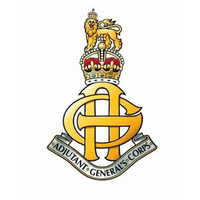History and Trail of the Royal Army Pay Corps (RAPC) and The Adjutant General’s Corps (AGC) at Worthy Down. Worthy Down is shared with other services but will always be the home of the RAPC and AGC. Below are links to a brief history of each period before the Army took over Worthy Down.

The Early Years
The word Worthy means ‘enclosure’ and was normally related to a plot of land given to Roman legionnaires by a grateful Emperor. The first known inhabitants of Worthy Down, in the fourth Century BC were Iron Age folk called the Belgae. (Which was the name given to the shop on camp years ago).
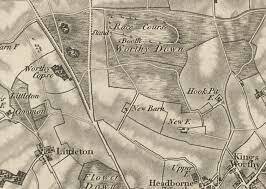
Winchester Racecourse
From the mid Eighteenth Century to late in the Nineteenth Century, the Down was used as a racecourse. The Winchester races were held here, with the first recorded race on the 11 September 1753.
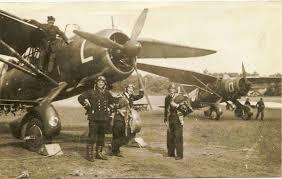
RAF Worthy Down
On 2 August 1917, the disused racecourse was visited by Lieutenant Colonel J A Chamier, Royal Flying Corps who was looking for a site to house the Wireless and Observers School. Worthy Down also became home to multiple RAF Squadrons (Sqn) who flew the Vickers Bomber Aircrafts. During 1924-25, one of these Squadrons was commanded by Sqn Leader Arthur Harris, more commonly known as the legendary ‘Bomber Harris’. He also served as the Station Commander from 1925-27 and after a hugely successful career, ended up being knighted having been appointed Marshall of the RAF.
He wrote a letter reminiscing about his tours at Worthy Down which can be read by clicking here.

Worthy Halt Railway Station
Built in 1918 as a small single platform halt to serve the Royal Flying Corps (later RAF) depot nearby. It included two passing loops (the shorter of which was used as a siding) to provide supplies to the site. Later, the station became a junction for a spur to connect with the Southern Railway line through Winchester.
At this point an additional line was built on the opposite side of the station to provide an island platform serving both northbound and southbound trains on separate lines. The Station/Halt was closed in March 1960.
HMS Kestrel
From 1938 the airfield increasingly became used by the Fleet Air Arm with their smaller aircraft types.
During WW2, the station was home to a couple of pilots who later went on to become famous actors, namely Laurence Olivier and Ralph Richardson. Fleet Air Arm released them in 1944 and together they formed the Old Vic Theatre Company. Click here (MODNET view)to read a letter from Sir Laurence Olivier, reminiscing about his time served at Worthy Down.
HMS Ariel
In 1952 the Naval Air Electrical School moved from Warrington to Worthy Down and Worthy Down was re-opened as HMS Ariel II (Ariel I, having been at Warrington).
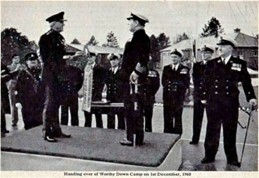
Worthy Down Handover and Takeoever
The camp was handed over to the RAPC from the Fleet Air Arm on 1 Dec 1960, with control passed to the Army in a ceremony that involved signing for the site and handing over the key to Worthy Down. The key, which is made from wood and about a metre long, is still held in the AGC Museum archive.
A major rebuild took place with only a few of the old buildings surviving and on 10 June 1961, John Profumo, the Secretary of State for War, officially opened the camp.
A stone marking this occasion is located by the shop and Gallops building on the far corner of the grassed area where Gould House stood.
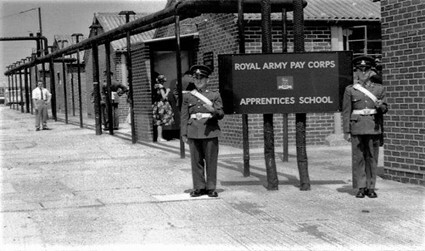
RAPC Apprentice College (1962 – 1985)
During 1962, the new School of Instruction was completed and on 11 September 1962 the RAPC Apprentice College had its first intake of 40 boys, housed in the old Air Electrical School huts. The houses were called Bednall, Rooney and Campbell.

RAPC & AGC Unicom Building (1986-2015)
The huts were later known as the Unicom Huts which many people will have had the experience of working within, RAPC & AGC UNICOM (1986 - 2015).
As well as the huts being used for the Apprentice College, they also became part of the Slater House and later Unicom. It also housed the IBM 705 system, PAMPAS and later, Unit Computing.
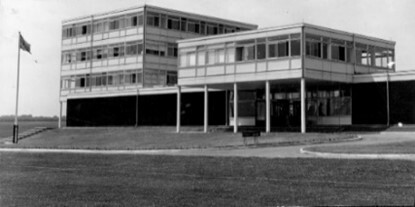
RAPC Slater House (1961 – 1986)
This building contained the Electronic Accounting Development Unit (EADU) with its IBM 705 system in the purpose-built three-storey Slater House, which later became known as the RAPC Computer Centre. Slater House was given a planned life of 10 years but lasted 25 years. It was then replaced by the new extensive computer centre, Bray house.

RAPC & AGC Bray House (1985 – 2008)
This building was used as the home of the Computer Centre, then AFPAA(WD), then EDS
Defence and finally the JPA Development Hub. The Computer Centre moved to HMS Centurion in Gosport when it vacated Bray House and was then known as Service Personnel and Veterans Agency.
Bray House was then taken over by the Food Services Training Wing (FSTW) which is used today for Tri-Service catering training. Before they could move in, a major rebuild happened within the outer walls. To this day, the outer corridors are still in place, but the inner middle section with the offices and central outdoor space has been remodelled to accommodate more kitchens.
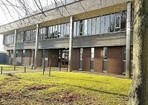
RAPC & AGC Gould House (1976 – 2019)
This building served the Command Pay Office CPO UKLF (with a bar!), then became the home of DSPS(A) and AGC RHQ with museum pieces displayed in the ground floor foyer.
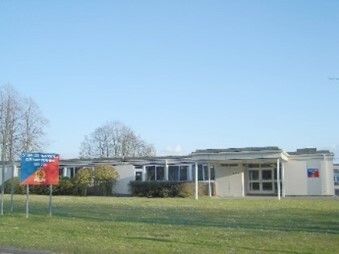
RAPC & AGC Professional Training Wing (PTW) (1962-1972)
The Regimental Pay Office (Stockbridge), then renamed the Regimental Pay Office (Winchester), first occupied this building before moving to Chester in 1972.
It then became the Professional Training Wing, teaching courses such as CIMA and ICSA.
Technical Training Company (TTC) - RAPC & AGC Trade training (1961 – 2017)
The RAPC Training Centre developed its professional, technical and military training syllabi to complement technological and technical advances. The Training Centre was renowned throughout Government circles - and indeed within industry - for the high standards of training it provided in the professional fields of electronic data processing, management accounting and secretary ship. It played a significant role in the training of personnel from other Government Departments and Corporations, particularly in the field of management accounting.
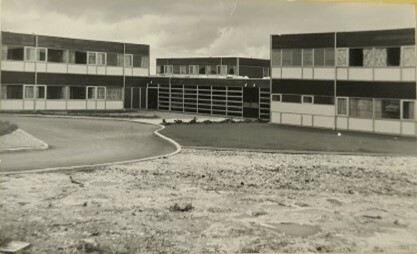
Warrant Officer & Sergeants Mess (1963 – 2020).
The entrance to the mess had changed over the years. Some will remember a large window frontage with the front door in the middle of the central part of the building. Many a good night were had in the Jack Medland Bar which was named after Jack, being Ex RAPC and then the Mess Manager.
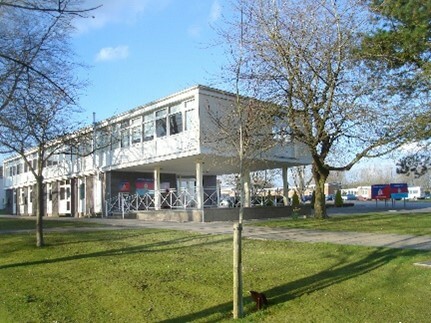
HQ Worthy Down Support Unit / HQ DSPA (1962 – 2020)
HQ was the command hub of Worthy Down. This is where the camp’s decisions were made and not to forget the typing pool when it moved from the RAO building across the road.
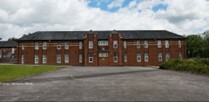
H Block Accommodation (WW2 – 2015)
This is the Soldiers' accommodation block with small parade square which had a footpath that led to this square, lined with trees that were planted with plaques. Here now stands the new Warrant Officer and Sargent's Mess & Officers' Messes.
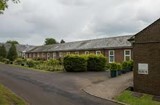
Officers’ Mess (1961 – 2020)
Much like the WOSM, many will have fond memories of the functions in the Officers' Mess.
The WRAC Rose Garden was located along the near side of the Mess before being moved due to the redevelopment.
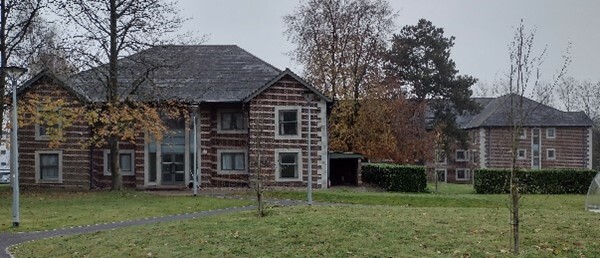
Kestral Block (1995 – Current)
This building served as extra Officers' accommodation and it is one of only three buildings that have survived the redevelopment of Worthy Down.
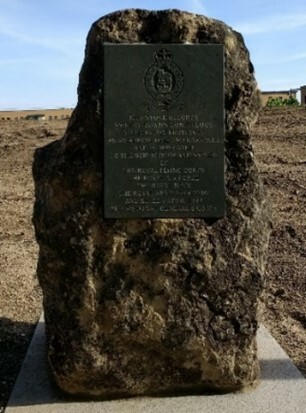
Commemorative Stone
The stone records WD’s continuous military use from 1917, including being the home of the RAPC from 1 Dec 1960 and the AGC from 6 Apr 1992. It can be found near the AGC Rose Garden.
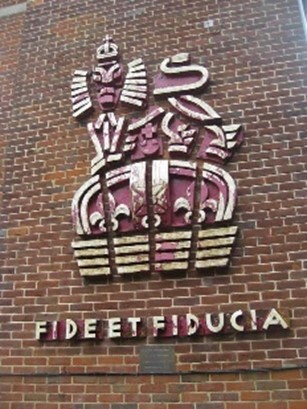
RAPC Moto
One of the rarer pieces in our heritage collection is this fantastic 10ft high ceramic mural created by
Hans Coper in the 1960s. Known as one of the most important figures in British post-war studio ceramics,
Coper focused on functional and sculptural art, but was also commissioned to make a small number of murals during the 1960s. One of them was this piece for the RAPC, which was commissioned for and graced the outside of Armstrong Hall, Worthy Down following its completion. Coper redesigned the RAPC capbadge into a simplified, contemporary form which allowed it to be split into different sections to allow for ease of making, moving, and installing.
Each piece was filled with sand to help to retain its shape during the firing process, but it was never removed so each piece is quite heavy! The mural is a creamy colour with the back plate painted brown and would have stood out beautifully against the brick of Armstrong Hall. In recent years the mural has received conservation treatment as it had been outside in all weathers for so long. Currently in storage, the AGC Museum in Winchester are planning on bringing it onto display in the museum in the future so you will be able to see it again in all its glory!
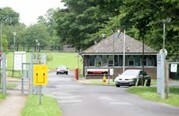
Worthy Down Entrance
The drive along Connaught Road to camp has not changed but what we knew as the West Police Post and surrounding area has now been transformed with a new Reception Centre.
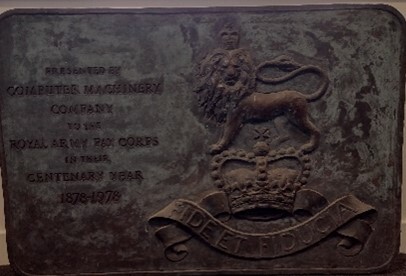
RAPC Plaque
This was located on the wall of the old West Police Post and is currently in storage.
FROM 2016 ONWARDS...

Project Wellesley - A multi-million pound project to transform Worthy Down into a tri-service training centre for logistics and personnel administration (DCLPA). It involved a total remodelling of the camp over 7 years.
The principal building on camp is Building 101 which the AGC runs their trade courses from. During the excavation phase for the new buildings, human remains were discovered. This area was in the location of the old Assault course, behind the media building.
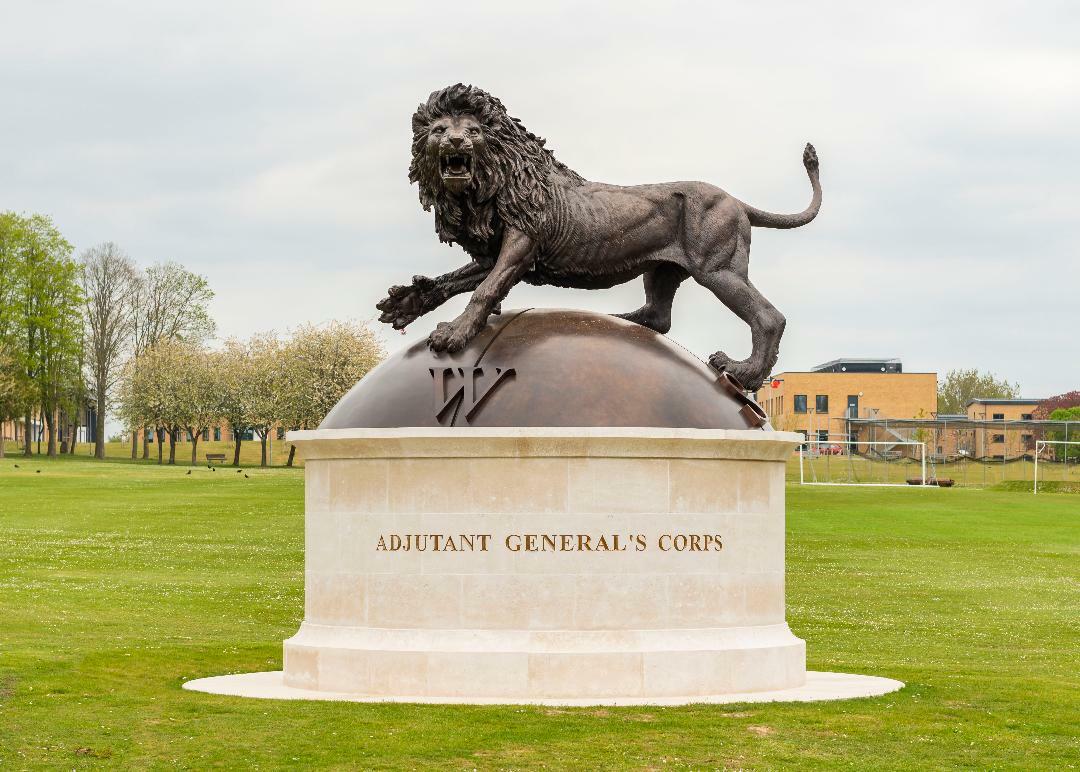
New AGC Heritage Assets
The AGC Association has kindly provided the finance for several new heritage assets to be built on camp:
AGC Monument
Designed by A Studio Edition, the AGC Lion Monument was unveiled in Apr 22 to commemorate the Corps' 30th Birthday anniversary. The lion and dome are cast in bronze and the plinth is made from Portland stone. The lion is symbolic to the AGC as it features on the old and new Corps emblem.
The compass depicts AGC personnel serving worldwide.
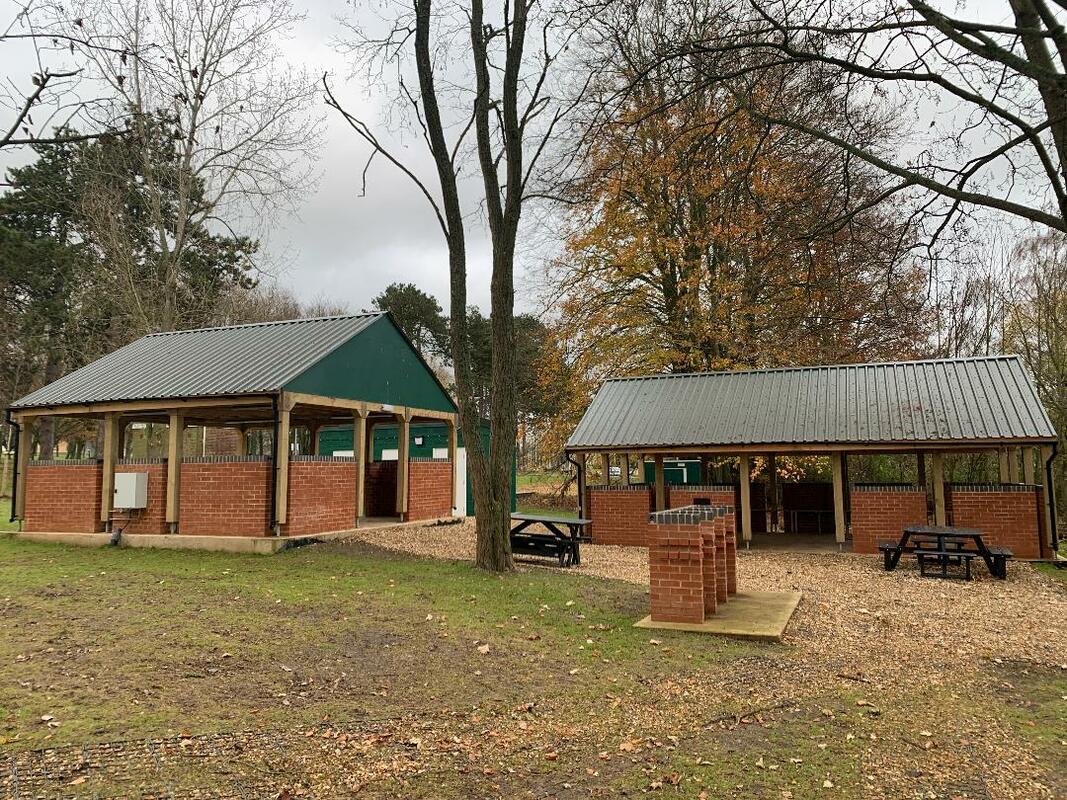
LEKALI CHULO Messing Facility
A messing hut is considered one of the four pillars of Gurkha welfare provision and it was noticeably absent from WD where there is a sizeable Nepalese diaspora (serving in the AGC, GSPS, RLC and QOGLR and Gurkha Veterans).
With the help from 70 Gurkha Field Sqn Queen's Gurkha Engineers, a messing facility was built in the summer 2021 to fulfil this cultural need and it also provides an outdoor venue for all personnel to socialise at on camp. It consists of a messing hut, cooking hut, ablution block and an outdoor BBQ area.
It is located behind the military guardroom. LEKALI CHULO is a Nepalese term for a communal village cooking stove, traditionally built from mud and can be found in remote areas of Nepal.
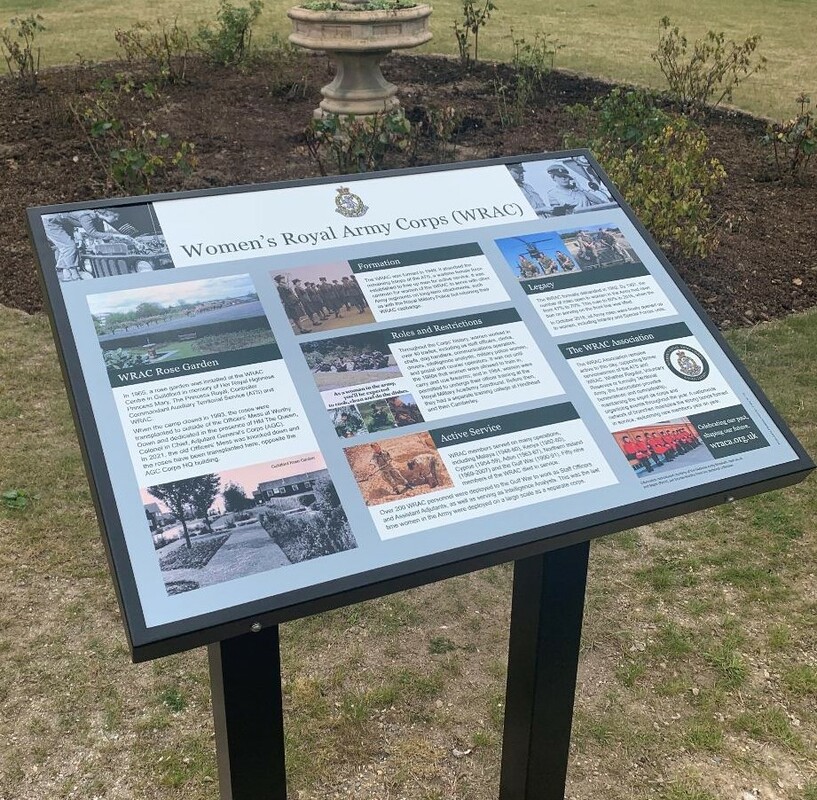
Women’s Royal Army Corps (WRAC) Rose Garden.
In 1965, a rose garden was installed at the WRAC Centre in Guildford in memory of General Her Royal Highness Princess Mary, The Princess Royal, Controller Commandant Auxiliary Territorial Service and WRAC. When the camp closed in 1993, the roses were transplanted to outside of the Officers’ Mess at Worthy Down and dedicated in the presence of HM The Queen, Colonel in Chief, AGC. In 2021, the old Officers’ Mess was knocked down and the roses have since been transplanted to opposite the AGC Corps HQ building.
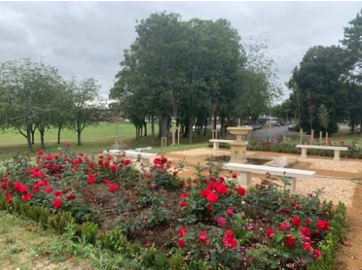
AGC Rose Garden
Under Project Wellesley, a new AGC Rose Garden was installed in January 2021. The rose beds are filled with fragrant Rosa Dame De Coeur red roses, surrounded by box hedging. The AGC engraved benches are made from Portland stone, as is the fountain which features AGC lion heads. It is designed to be a place of relaxation and is a popular location for lunch breaks.
